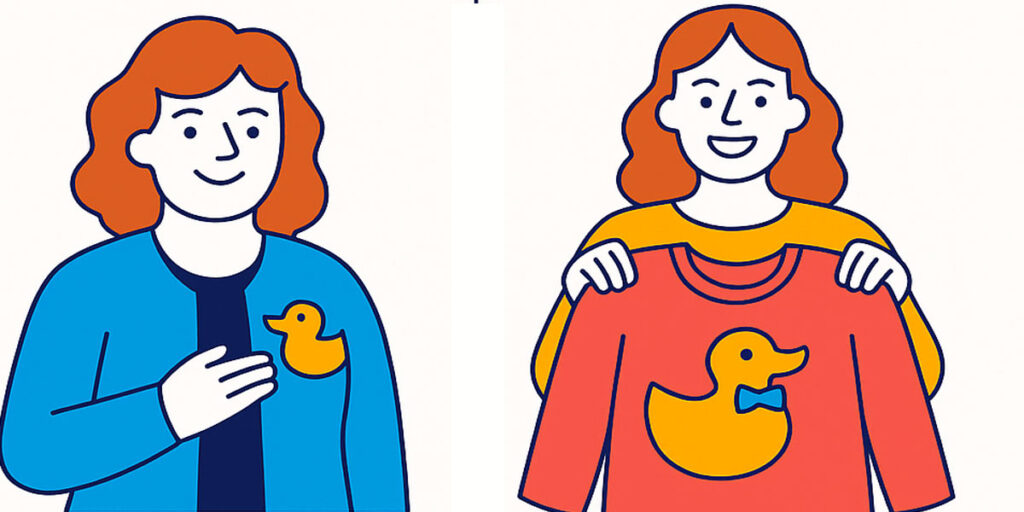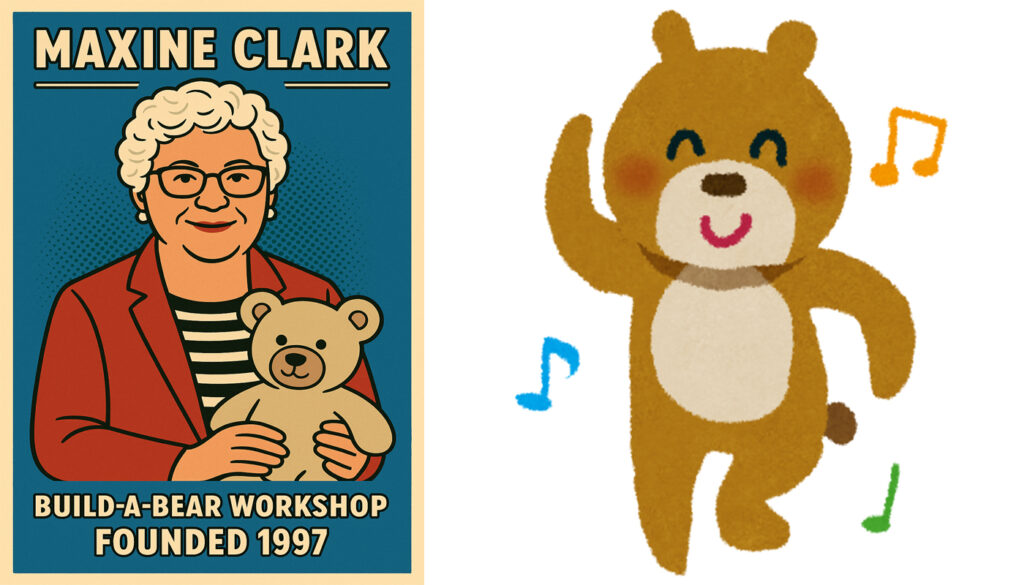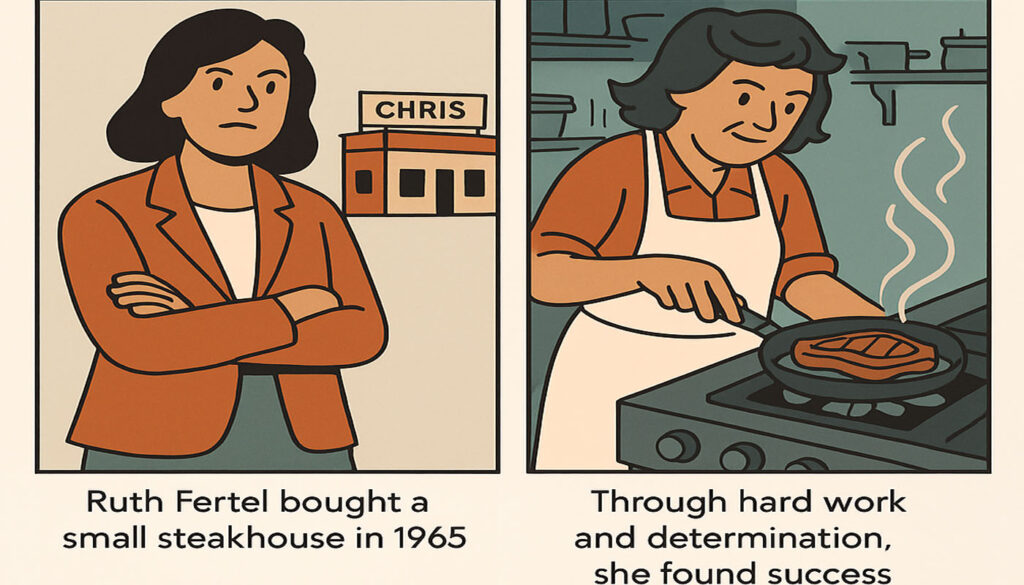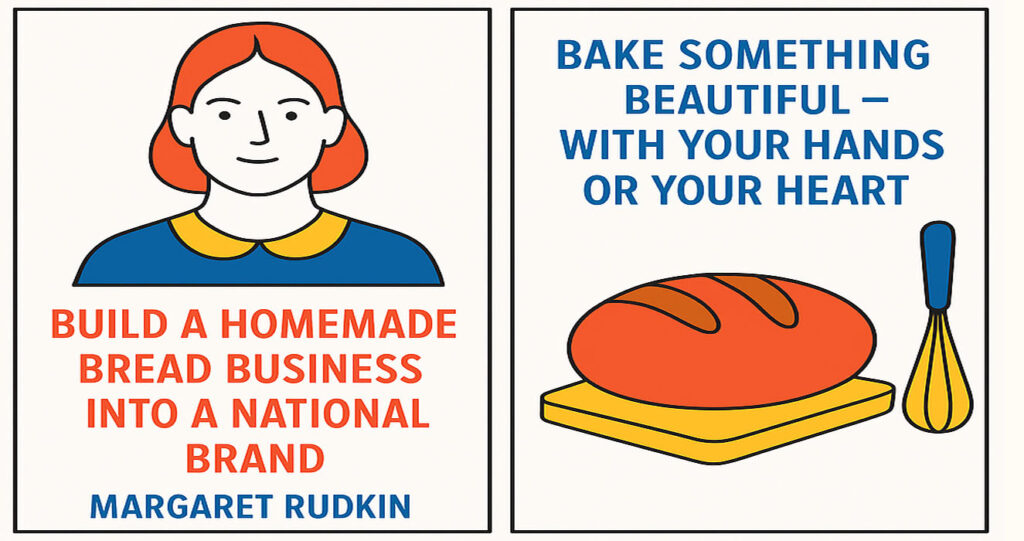A small, peaceful town in Wisconsin, where dreams usually stayed hidden beneath piles of laundry and everyday routines, Jeanne Bice chose a different path—she chose not to be ordinary. While others dressed in beige, she wore sparkle. While most followed plain lines, she stitched on bows. As the world tried to blend in, Jeanne quietly prepared to shine—not for attention, but for delight. For laughter. For the twinkle in the eyes of women who had forgotten how joyful it feels to wear something that makes them smile.
Jeanne wasn’t born into fashion. Her childhood was stitched with simplicity, filled with hard work, family, and ordinary routines. But her imagination—oh, that was embroidered in gold. She saw color in grey places. She laughed loudly in quiet rooms. And even as a young girl, she carried this idea that clothing should feel like a celebration, not a chore.
She became a teacher first. She taught schoolchildren not just reading and math, but how to sparkle in spirit. Even in those days, her wardrobe whispered rebellion—bright pins, hand-painted sweatshirts, and cheerful colors. Some would call it quirky. She called it “Quacker.”
That word—Quacker—would become her destiny. It was funny. It was bold. It was exactly like her. After her husband’s sudden death, Jeanne faced something far greater than fashion: rebuilding life from scratch. She had no business degree, no roadmap, and no wealthy investors. But she had fabric. She had glitter. And most importantly, she had faith.
With her daughter Lee at her side, Jeanne Bice started Quacker Factory in the basement of her home. It wasn’t glamorous. It was glue guns, rhinestones, sweatshirts, and sheer will. Their mission was simple: create clothes that made people smile. Every sequin was placed with love. Every shirt came with a little wink.
At a time when fashion told women they had to be thin, tall, young, and silent to be stylish, Jeanne’s clothes said, “Be joyful. Be loud. Be you.” Her sweatshirts had ducks. Her cardigans had snowflakes. Her designs had hearts and humor. She was selling joy stitched into cotton.
But how do you go from a basement business to a multimillion-dollar brand?
You get seen. And for Jeanne, that magic moment came when she was invited to present Quacker Factory on QVC.
She wasn’t a model. She wasn’t trained in television. She had never sold anything live to millions of people. But she had sparkle, and that spark lit up the screen. The moment she appeared on QVC, she did more than sell clothes—she made people feel good. She reminded women watching at home that they didn’t have to disappear. That it was okay to wear pink sequins even at age 65. That joy was not a size or a season. It was a choice.
Jeanne didn’t just sell clothes. She created a movement.
Women began calling themselves “Quackers.” They wore duck pins. They showed up to live QVC broadcasts with glitter on their cheeks and joy in their hearts. For them, Jeanne wasn’t just a designer. She was their sister. Their cheerleader. The woman who told them it was okay to laugh again.
And laugh they did.
On camera, Jeanne wore feathered hats. She told stories about her childhood. She giggled. She danced. She said things that no fashion executive ever dared say—things like “You’re never too old to twinkle,” or “Life’s too short to wear boring clothes.” And somehow, those simple words wrapped themselves around millions of hearts.
Quacker Factory exploded in popularity. The designs evolved from simple sweatshirts to full seasonal collections—Halloween tops with pumpkins that sparkled, Christmas sweaters that jingled, Fourth of July outfits that glittered like fireworks. Each piece brought a story. Each piece brought connection.
Her customers weren’t models. They were grandmas, teachers, nurses, retirees, breast cancer survivors. And Jeanne gave them something rare in fashion: inclusion. She made clothes that fit every shape. She didn’t chase trends. She built traditions. She didn’t preach confidence. She stitched it right into every seam.
Even in her success, Jeanne never became untouchable. She remained close to her Quacker community. She read their letters. She cried over their stories. She responded on air to their calls. She made sure every collection had a little something for every woman—whether she was shy or bold, quiet or colorful.
Her famous catchphrase became: “Let your sparkle shine.”
And she lived by it. Jeanne didn’t hide her grief, or her age, or her battles. She turned them into power. Into sparkle. Into reasons to celebrate more and fear less.
People laughed when she started out. They said women wouldn’t buy duck-decorated cardigans. They said rhinestones weren’t serious fashion. They said middle-aged women didn’t want to be noticed.
Jeanne proved them all wrong.
By the time she passed away in 2011, Jeanne Bice had built not just a business, but a legacy. Quacker Factory had sold millions of garments. Her appearances on QVC had become must-watch moments. Her community had grown into a sisterhood of bold women unafraid to be noticed.
But more than the numbers, it was her impact that sparkled brightest.
She reminded women everywhere that being noticed isn’t vanity—it’s vitality. That dressing up can be healing. That fashion is not about rules; it’s about expression. And that sometimes, the loudest voice in the room isn’t a shout, but a giggle.
Jeanne Bice didn’t follow the fashion world’s rules. She re-wrote them. In glitter pen.
And she did it all with grace, grit, and glitter.
Her story is a reminder that joy is powerful. That laughter is healing. That a sweatshirt can be a revolution. And that even the most unexpected ideas—like ducks and sequins—can become empires when led by love.
Today, when you see someone wearing a sparkle-dusted holiday sweater, or a woman confidently laughing in a bright, bejeweled top, remember: Jeanne was here. She stitched joy into fashion. She made every woman feel seen. And she left behind a world a little brighter, a little bolder, and a whole lot more sparkly.
That was Jeanne Bice—the Quacker Queen of joy.

















